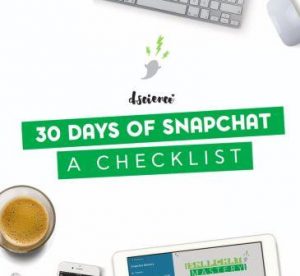
UX (User experience) can be very time-consuming, done right it’s an ongoing process of continuous iterative tweaks and refinements. The aim of the game being to make a product, site, culture and experience that your audience LOVE. That sounds like hard work but never fear! There is some juicy low hanging UX fruit to be picked that will help you increase your homepage conversion and product revenue. If you have the resources to make basic website tweaks and a thirst for conversion optimization, this post is a great place to start. When I perform a UX audit for a client, it always surprises me how many small pain points COULD be solved to create a unified page with a real purpose!
At this point, I’m going to assume your home page has a solid identity and visual style and on the face of it… your homepage looks good! If your page is a little rough around the edges, no worries! The below will still apply, but in this post, I am not going to lecture you on style, color or visual appearance. What you will learn is the thinking behind what makes a perfect page.
So let’s get to it and uncover the top 10 UX hotfixes for your home page.
1. Create captivating taglines
Arguably you have under 2 seconds to grab a user’s attention when they first visit your site. That’s no time at all! Your main Value Proposition has to resonate with your target audience and fast! If your visitor clearly understands your main USP and you set the expectation and goal for the page, then they are much more likely to read on and convert. Try using this tagline formula for better results:
End result customer wants + Specific period of time + Address the objections.
So let’s see that in action, whoosh: Fresh pizza delivered to your door, in 30 mins, or get it free.
End result customer wants: Fresh pizza delivered to your door
Specific period of time: in 30 mins
Address the objections: or get it free
Mmm pizza! This approach may not work for all business types (an undertaker for example!) but this method taps into the way we make decisions. It leads with the USP, positioned as a benefit to your audience. It also highlights I could get me some fresh pizza in 30min which is an attractive benefit! And to conclude if it isn’t here in the allotted time I get it for free, so what’s the risk? Win, win, win. I’m hooked.
2. Concentrate on one goal
Keep your home page goal simple and focused. And by the ‘goal’ I mean the thing you want your audience to do. The more options you provide, the more hoops you ask your prospect to jump through, the more cognitive load you place on the unfortunate individual’s brain. We’ve all been there, staring at a page not knowing where to look or what to do. Attempt to keep one primary goal per page. Provide everything that individual needs to make a clear decision and remove ALL the ‘fluffy’ stuff.
3. Reiterate your USP
Now your goal is focused, don’t forget to repeat your goal throughout your home page. There’s a lot of evidence that states hammering home the same USP more than once per page increases conversion and improves clarity!
4. Craft an empathetic landscape
Remember you’re writing for REAL people – tell a story! Most homepages are bleak, corporate landscapes with little time for real emotion. People connect with feeling, empathy and humor subconsciously. Breath life into your copy, images and videos – and stand back and watch your online conversions increase.
5. Leverage fear of missing out
On the flip side, loss aversion is another powerful trigger and emotion that can be utilized to connect with your audience. We are more scared to lose than happy to gain. Knowing this enables us to position our messaging as such to promote an emotional response. But be careful, too much fear is never a good thing. Here’s an example of how to use our natural aversion to loss to your advantage:
– You will save money by fixing your website’s UX issues.
– You will lose money by not fixing your website UX issues.
Which of these resonates with you? The second is more compelling as it draws attention to the monetary loss you’ll incur if you don’t fix your UX. Losing money is perceived to be more compelling than saving. Our brains can be strange places!
6. Reinforce action with social proof
We are programmed to follow the crowd, and as an individual, I crave to be in the best community for my needs; be it a digital product or my friendship group. We are relying on social proof increasingly to back our decision-making and why wouldn’t we? Whether it’s Amazon for product reviews or Rotten Tomatoes for movies, we all want to avoid the risk associated with losing money or time. We all seek out social proof! Increase your conversion by showcasing your best testimonials, reinforce your reputability and work hard to develop your sites’ crowd mentality.

7. Sorry, it’s not me… it’s you.
Use the second person, not first person tense in your sales copy. By that I mean stay clear of any text that starts with “We do this…” It’s not about what you do, but about how you help your prospect. Here’s an example:
Incorrect: WE help increase website conversion with UX.
Correct: Helping YOU increase YOUR website conversion with UX.
People are more likely to connect with your copy when you talk about their situation, not yours. Connect with them! This one is über common and makes a huge difference.
8. Keep it simple, stupid.
Reevaluate what elements are truly important to your customer decision making then dial back the design and remove any unnecessary elements. Here are three quick UX experiments to test:
– Reduce the number of menu links in your navigation. Any exit away from your page should fight for its place. Remember keeping your goal focused on conversion is key.
– Remove mega menus and long drop downs from menus. Presenting too many options is a killer when it comes to decision making. Apply this less is more thinking throughout your page.
– Reduce sentence and paragraph length and hammer home the benefits. Longform (long landing pages) work well depending on your situation but make sure you’re breaking up content into snappy sentences with plenty of white space. And always stop and take the time to thoughtfully write your content. Your content should take as long to create as your design work.
9. Always write for your audience and avoid jargon
Your content must connect and resonate with the right audience for your product. Putting yourself in their mindset is vitally important and enables you to present them with on point, concise jargon-free content that taps into what they need to hear. Lay off the long, complicated words, back away from the thesaurus! You will only alienate your prospects.
10. Page psychology
Behind every great home page is an approach, an order in which things should be presented to help aid conversion that taps into how we think, leaning on neuroscience and psychology. Rarely should content just be dropped into a page and if it is in your case, it’s time rethink your strategy. Appreciate that like any great sales pitch, there is an optimized order to the information presented. There is always a deeper level to conversion, be it through a tuned sales pitch, newspaper ad, video ad or landing page. Sadly this topic is too broad to discuss in depth here. Want to know more about page psychology? Let me know, and I will write a dedicated post. It’s a fascinating subject!
How do I make these changes on my landing page?
That’s an excellent question! Here are three scenarios that should get you started:
1. I don’t have a lot of traffic yet, but I want to get on and do it!
Great! Then go for it. If you’re looking for further proof first that some of the above issues are affecting your page, experiment with some small-scale user testing before and after the work for early validation. You should see an increase in customer happiness and engagement. Then once you start getting more traffic move on…
2. I have an reasonable amount of traffic and want to get going!
Sweet! Go you! You may find batch testing entire pages is the way to go here. Create a copy of your home page, make your changes and run version A against B. This will give you a generic winner but won’t drill you down into the detail. This way at least you know you’re improving!
3. I have all the traffic and want to improve my conversion!
Great, well you’re reading the right thing to get you started. In this instance, small changes will obviously make a large difference. A/B macro testing tweaks is the way to go. Start at the top of the page and work your way down improving as you go, being careful not to run too many experiments at once.
It’s important to mention that all the top companies test! Experimentation and validation are absolutely key to understanding how your users relate to and perceive your product in the real world. Building an internal culture of unbiased, open minded experimentation enables you to act in confidence and scale a product that your users will love to be a part of. And that is a fun place to be!
Digital & Social Articles on Business 2 Community(57)
Report Post








